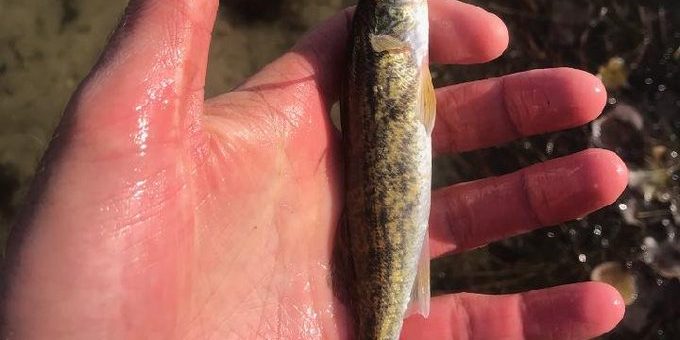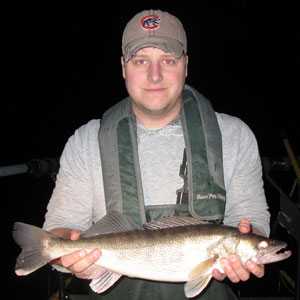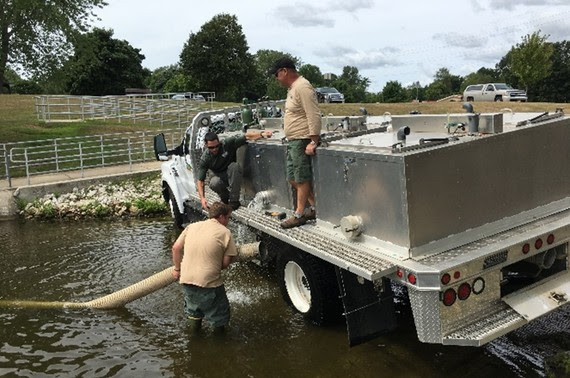
INDIANA – For the first time, the Indiana Department of Natural Resources’s hatchery system was successful in producing advanced walleye fingerlings (measuring 5-7 inches) in large numbers for annual fall stockings.

Hatchery biologists at Fawn River State Fish Hatchery finished stocking these larger fish alongside walleye stock (measuring 6-8 inches) purchased from a private commercial fish supplier.
Predation is a huge factor limiting walleye stocking success. Smaller fingerlings (measuring 1-2 inches) were traditionally stocked in the spring and were often eaten before they could attain a mature 14 inches. Biologists adjusted their stocking schedule to allow more time for the fish to grow in the protected hatchery system, giving them time to outgrow predators prior to stocking.
Due to a lack of suitable spawning habitat, walleye are unable to maintain their numbers naturally in many of Indiana’s lakes. Stockings are required to maintain many of the fisheries Indiana’s anglers enjoy.
Almost 43,000 fall fingerling walleyes were stocked at eight locations in northern Indiana in early October. An additional 26,738 fall fingerlings were stocked at five more locations from late October to mid-November.

The target stocking rate for these larger fall walleye fingerlings is 10 fish per acre, a figure DNR fisheries biologists say provides the best balance for fishing potential, growth, and fisheries balance.
Lakes and (county) stocked include:
- Bass Lake (Starke)
- Crooked Lake (Steuben)
- Clear Lake (Steuben)
- George (Steuben)
- Pine/Stone Lakes (LaPorte)
- Pretty Lake (LaGrange)
- St. Joseph River (St. Joseph)
- Sylvan Lake (Noble)
- Shriner Lake (Whitley)
- Wall Lake (LaGrange)
- Winona Lake (Kosciusko)
- Wolf Lake (Lake)
Most of these locations are stocked with fall fingerlings each year to sustain the walleye population. A few locations are stocked on alternate years to improve walleye fishing in additional areas. The lakes are continually evaluated by biologists for fish survival and angling use.
Multiple other lakes are stocked with walleyes by privately funded lake associations. A stocking permit that is evaluated and approved by the local DNR fisheries biologist is needed before any stocking can take place.
The young fish are often found in vegetation or large rocky habitat. Anglers should handle young walleye they catch gently because they are the future of the fishery.
Learn more about Indiana walleye fisheries: wildlife.IN.gov/fishing/walleye-fishing.




